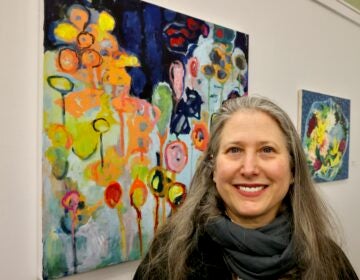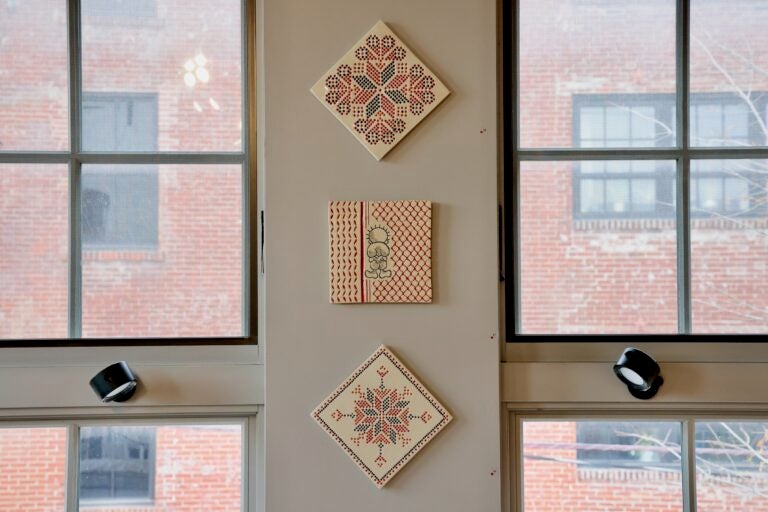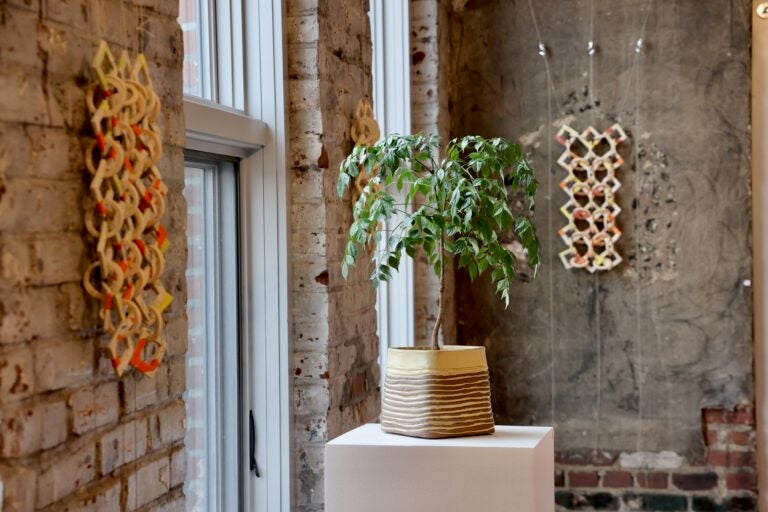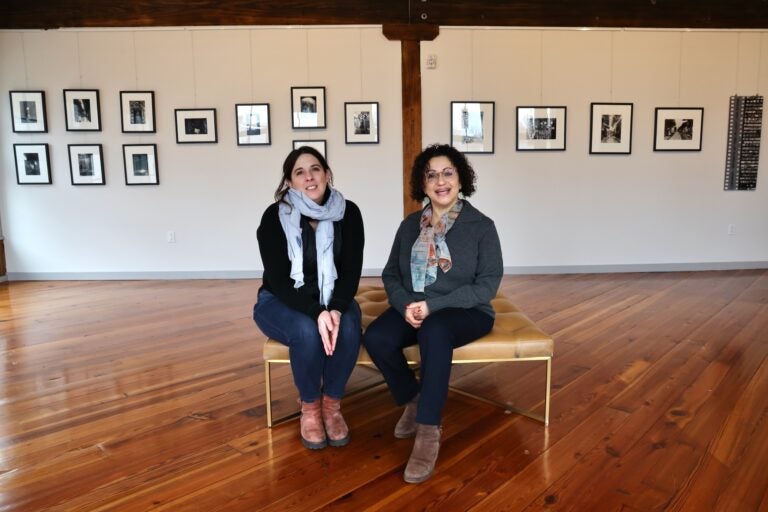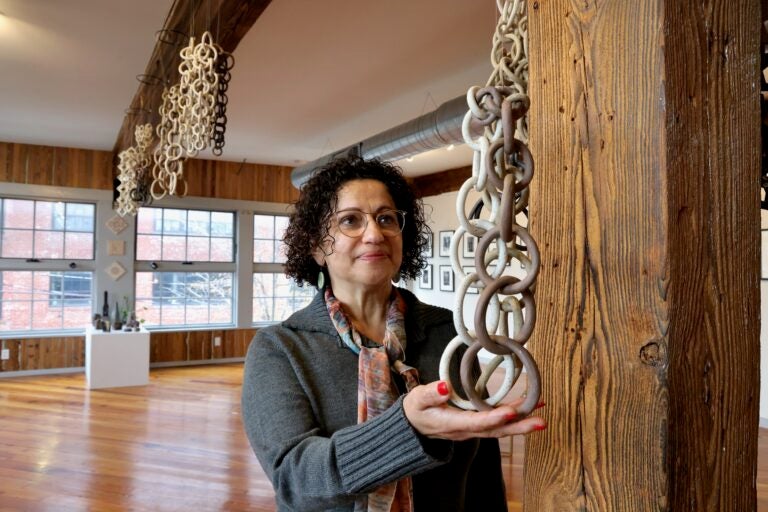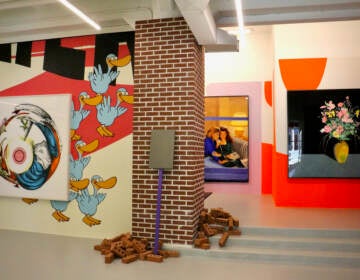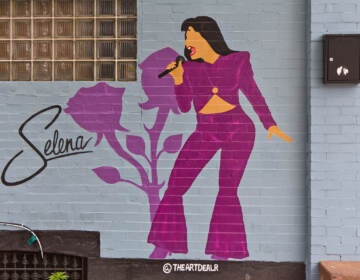Al-Bustan exhibition links Lebanon to Philadelphia
Founding director Hazami Sayed makes musical chains that tie her Arabic heritage to her life in Philly.
Listen 1:24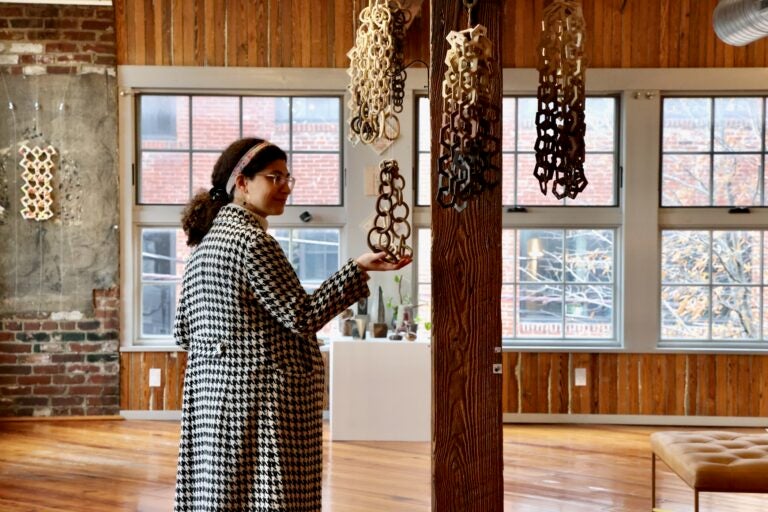
Hazami Sayed's links are made to be touched gently. They make a chiming sound when handled. Pictured is the artist's daughter-in-law, Christina Ingraldi. (Emma Lee/WHYY)
From Philly and the Pa. suburbs to South Jersey and Delaware, what would you like WHYY News to cover? Let us know!
Hazami Sayed hopes you will touch her artwork.
The photographer and ceramic artist who goes by “zami,” makes hanging clusters of clay chains, now on view at the Al-Bustan Seeds of Culture gallery in Philadelphia’s Northern Liberties.
She crafts the links of different shapes and thickness to achieve certain sonic tones when you gently knock them together.
“It takes a minute for people to feel comfortable to do that,” said Sayed. “It took one person at the opening reception to start touching them, and people listen and turn around and say, ‘Oh! We can do that.’”
Last fall, the Arabic language and cultural organization Al-Bustan Seeds of Culture moved into its new office space in Northern Liberties, above a coffee shop and pizza kitchen on Master Street. It just launched its gallery space exhibiting artists of Arabic heritage.
The inaugural exhibition, “Imprints of Time and Place,” is a solo show by Sayed, Al-Bustan’s founding director. The architect and artist who grew up in Lebanon and Kuwait started Al-Bustan in 2002 in her West Philly home as an Arabic language day camp for children. Since then it has expanded into a wider spectrum of Arabic and SWANA arts, including poetry, music, and art. She stepped down in 2020.
“I’ve been in Philadelphia for 26 years, and it has been quite a journey,” she said. “This exhibit allowed me to pull different pieces of my time here, and the things that have been very close to my heart.”
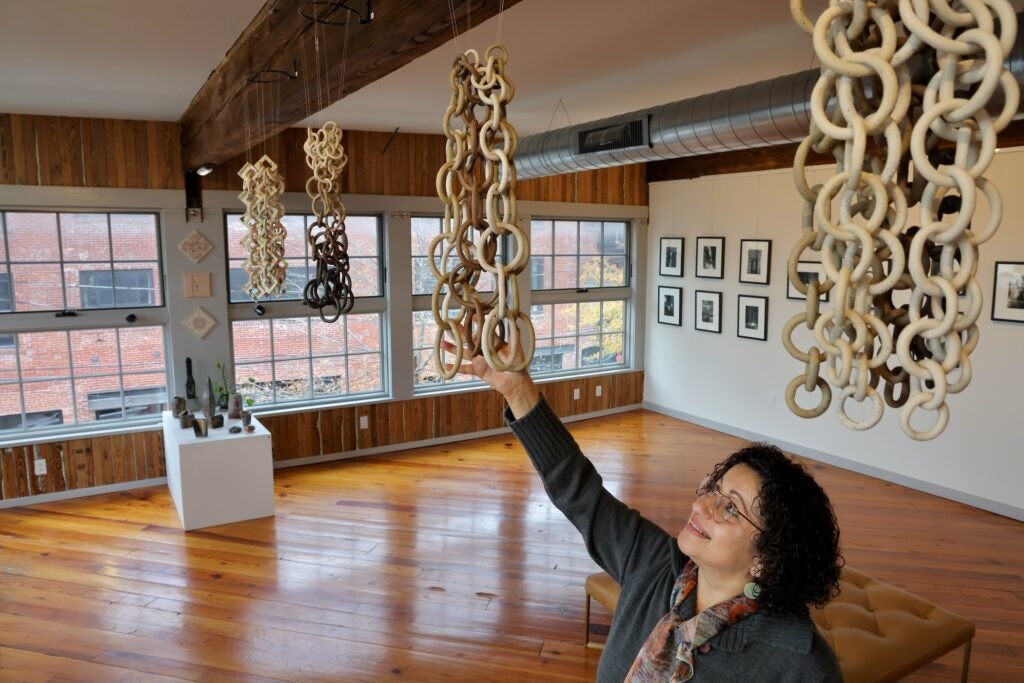
“Imprints of Time and Place” features photography, collage and ceramics spanning decades. It includes photos of children in the Arabic day camps that were the origin of Al-Bustan more than 20 years ago, photos of Lebanon’s historic neighborhoods taken during Sayed’s return trips, photos of recent street protests in both Beirut and Philadelphia and ceramics shaped along the way.
During a trip to Lebanon in 2001, Hazami strayed outside the familiarity of Beirut to visit Tripoli and smaller cities Byblos and Deir El-Qamar, whose historic structures sustained less damage from the 15-year Lebanese Civil War. Her photo series “Imprints of Time in Light and Stone” is a meditation on how the play of light on timeworn stone evokes the quiet endurance of cities over millennia.
Hazami said the ancient built environments of Lebanon have constantly been vulnerable to war, particularly now with Israeli bombings against Hezbollah forces in Lebanon.
“Historic sites in southern Lebanon, south of Beirut, were bombed,” she said. “I fear that much has been destroyed, which is a real shame.”
A trip to Beirut in 2019 coincided with the so-called October Revolution, when widespread street demonstrations protested what was popularly regarded as runaway political corruption and a failure of leadership leading to a soaring unemployment rate, sharply increasing taxation and a lack of basic utilities.
Sayed witnessed the 2019 protests with her camera. In “Imprints of Time and Place” she used those photos in a giant collage, which includes recent pictures of street demonstrations in Philadelphia protesting the Israeli bombing of Gaza.
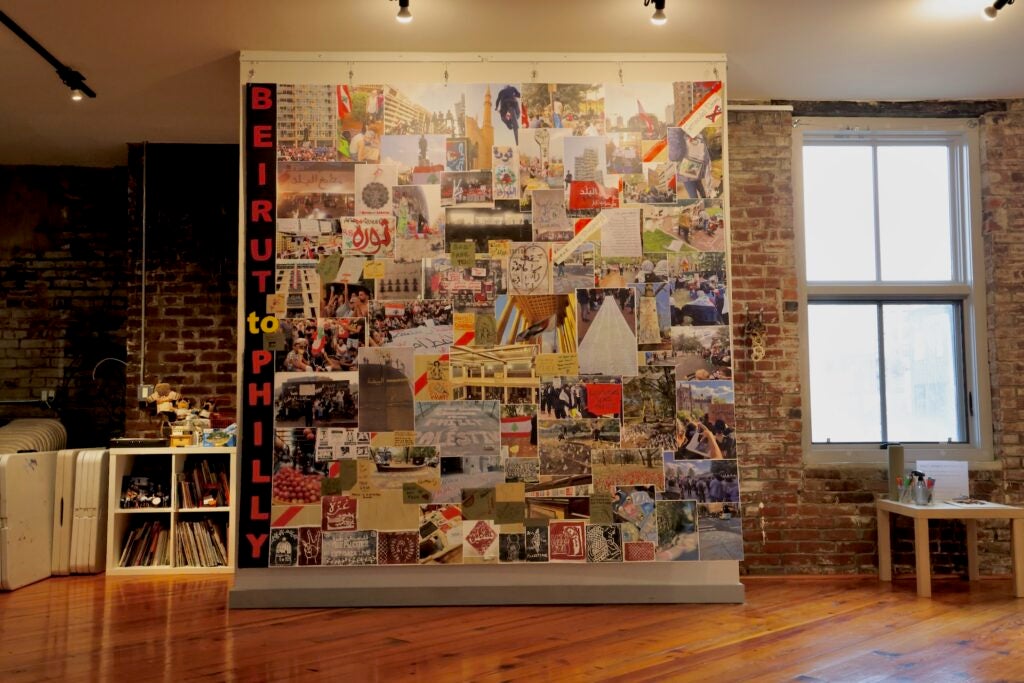
“I haven’t been to Lebanon since 2019, but I have been here in Philadelphia seeing other forms of resistance, and people speaking out across the city and across campuses,” she said. “It’s a very different moment than when I was in Beirut in 2019, but it feels like a tumultuous time in this country, certainly in the Arab region as well.”
When not out in the streets with her camera, Sayed spends time inside shaping clay. She started shaping clay rings into chains, carefully double-firing them in the electric kilns at the Black House Clay Studio in West Philadelphia, making them hard enough to act as windchimes.
“The clay links have been a metaphor for me at a time when it feels very isolating,” she said. “This past year has been very tumultuous politically, both overseas in the Arab region as well as here in America.”
“I would be at the studio listening to a news podcast or following live news, and I’m working with these clay pieces. It’s a very small, intimate process, additive and iterative. It felt to me like a metaphor for something that I’m seeking, this community and connection,” she said.
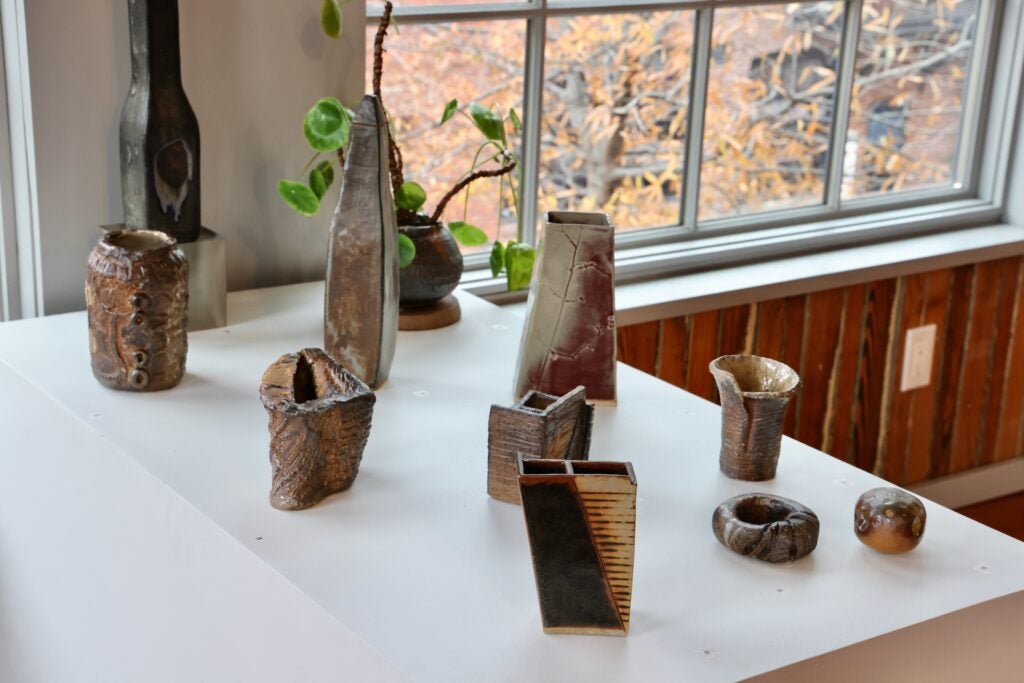
The exhibition also includes ceramic vases, cups and pitchers Sayed has made drawing from her Lebanese heritage of hospitality, and glazed tiles featuring patterns of traditional Lebanese embroidery. One of her tiles is formed into the pattern of a Palestinian keffiyeh scarf.
“I love the connections that she makes between history and contemporary life,” said Al-Bustan’s executive director Lisa Volta. “One of Al-Bustan’s mission values is about this idea of dynamic culture: rooted in tradition, we make culture that propels us forward towards new ideas.”
Volta said she will curate about four exhibitions a year in the gallery space, which will be used for musical events and community gatherings, and is outfitted with a library of Arabic materials. Over the recent holidays the space hosted its first souk, an Arabic vendor marketplace typically held in North African and Middle Eastern city streets.
“Imprints of Time and Place” has been extended until Feb. 21.

Get daily updates from WHYY News!
WHYY is your source for fact-based, in-depth journalism and information. As a nonprofit organization, we rely on financial support from readers like you. Please give today.



